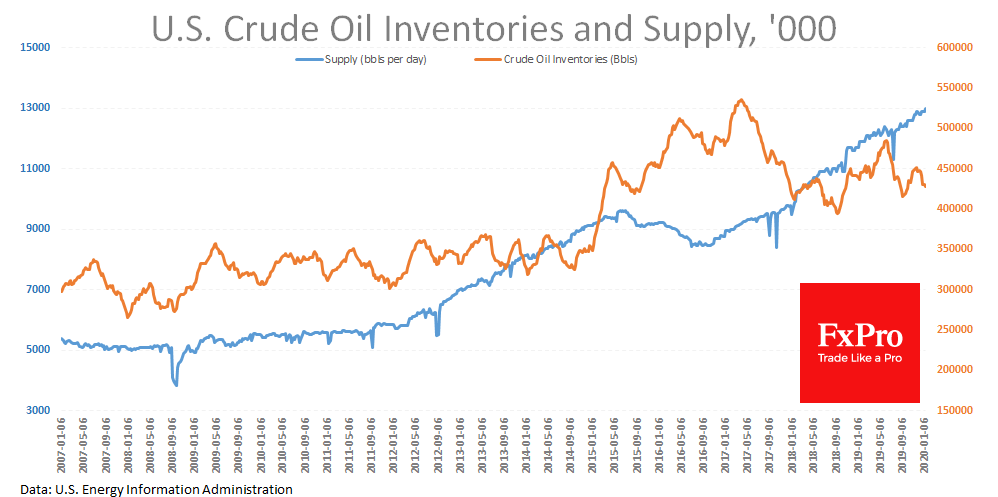Oil intensifies the decline due to a new wave of oversupply fears
January 23, 2020 @ 15:13 +03:00
Fear of the Chinese virus continues to put pressure on markets. The actions of the Chinese authorities, who acknowledged the problem and took some steps to curb the spreading, were favourably received by markets on Wednesday. However, reports of an increased number of death from coronavirus brought the fears back to the fore.
In the markets, it turned out to be a new wave of decline in stocks, among which the most significant blow is to the carrier companies. Fears of the virus and measures to contain it are expected to affect the revenue of companies.
Besides, oil has come under pressure because of fears of lower demand. At the same time, there are reports of reserves growth, which brings back to the market fears of overproduction.
This week’s dynamics of oil indicates the weakness of arguments for further growth. It took the market a few hours to offset the news about production disruptions in Libya on Monday, while the reaction to the Chinese virus pressures the markets for the fourth day.
The latest data showed an increase in production in the USA to 13 million barrels per day. US reported a steady Crude production increase from 2016, despite significant price fluctuations over this time.
To a large extent, the current oil price levels is a gift from OPEC+, which maintains tight production quotas despite the overall increase in oil consumption. While traditional oil producers, such as Russia and Saudi Arabia, are imposing self-limitation to keep prices, the United States has become the largest oil producer and increase its gap.
The big question for market participants is, will Saudi Arabia and Russia continue to witness their energy market share spill over to the US? In 2014, Saudi Arabia was betting that the market would stabilize itself by squeezing expensive oil shale projects out of the market amid declining prices. However, the reaction of oil was so strong that it was not possible to bring this game to an end. Russia and Saudi Arabia agreed to restrict production in early 2016, and in the following years stabilized the market at their own expense.
It is quite possible that in 2020 the issue of market self-balancing may become the main one again. This means that Russia and Saudi Arabia may take a new attempt to self-balance the market. Retaining quotas or even not strictly enforcing them may trigger a new impulse to reduce oil prices.
It will be exciting to observe the reaction of major OPEC+ representatives in case Brent declines below $50 per barrel. The response of the markets to the latest events suggests that chances for testing the lower bound of the trading range are much higher than for returning prices to steady growth. For short-term market players, the nearest target for decline may be the levels near $55 per barrel of Brent, and the more distant ones around $50, which may be tested in February.
The FxPro Analyst Team








